Wyonna Palmer, an Aboriginal mother from Central Australia, didn’t see her young nephew for 10 years. Social workers removed him from his parent’s home because authorities deemed it unsafe — but Palmer said she and the extended family were not notified. No one asked them if they could take the boy, aged 5, or his 4-year-old sister.
Palmer spent years trying to locate the siblings in the system. She found her niece and successfully fought for custody. But her nephew was lost.
Years later, he found her. He had been taken to another state 1,000 miles away and placed in a home where he was treated poorly, Palmer said.
“He had to run away because of what was happening to him behind closed doors,” Palmer said. “They would say bad things to him and lock him up in the bedroom and say his family doesn’t exist, and that he was just a boy that got [taken] away from a drunken person.”
Stories like this are common in Aboriginal families. In fact, there has been a steady increase in the numbers of Aboriginal children removed from their families and placed in out-of-home care over the past decade.
‘We know how to grow our kids up’
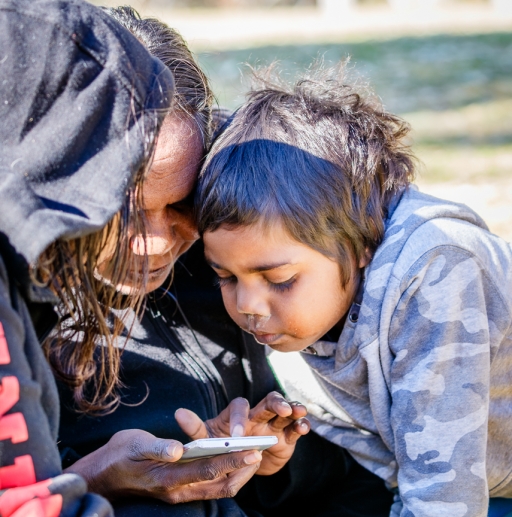
On a Sunday afternoon picnic at Telegraph Station in Alice Springs, Wyonna Palmer looks at her phone as her 6-year-old daughter, Lakayla, and her sister, Anna Maria, look on.
In 2008, 281 Aboriginal children were in out-of-home care across the Northern Territory. By 2018, that number jumped to 948. The number of non-indigenous children removed from families held steady over the same period, hovering at about 115 children annually.
“There’s definitely an overrepresentation of Aboriginal children entering into the child protection system,” said Northern Territory’s Children’s Commissioner Colleen Gwynne.
The Children’s Commissioner is independent from the Northern Territory Department of Children and Families and the work of her office is broad in scope. Gwynne oversees all services to vulnerable children who are inside of, or at risk of going into, the youth detention system and the child protection system, as well as children with disabilities and children involved with “volatile substances.” Gwynne isn’t responsible for how social service workers conduct business, but she can monitor it.
Gwynne said only children in imminent danger are removed. She attributes removals in Indigenous families to poverty, overcrowding, violence and drug and alcohol abuse.
Palmer thinks social services staff already have their minds made up when they approach an Aboriginal family and the implication that many Aboriginal families are unsafe places makes her bristle.
“I feel angry and sad,” Palmer said, “not all Aboriginal people are like that. You can’t just say that Aboriginal people are violent you know, and can’t look after their kids. We know how to grow our kids up."
The issue made national headlines earlier this year when an Indigenous toddler was raped in a remote Aboriginal community in the Northern Territory, and the alleged perpetrator was a member of the family. A nasty public debate ensued in which op-ed writers and talking heads on TV began suggesting that Indigenous Australians couldn’t be trusted to raise their own children.
A SKY News journalist reported that “residents are also asking questions about how the child was allowed to remain in a house they say was well known to the police and child protection agencies.” The news story quoted a resident as saying, “we’re devastated and angry, if I could have, I would have stolen that child myself.”
A second Stolen Generation?
That the resident wanted to steal the child to keep her safe is a blunt reference to the policies of the past that led to children being known as the “stolen generations,” when Aboriginal children were taken from their families, when authorities literally did steal them.
In 2008, Australian Prime Minister Kevin Rudd apologized to the Aboriginal community for the 19th century policy of forcibly removing Indigenous children.
“The injustices of the past must never happen again,” Rudd said.
His statement was meant as the symbolic end to a shameful part of Australia’s colonial history where thousands of children were taken from their families and placed in group homes or with white families. Some never again saw their parents. They were called the Stolen Generations.
“The policies of the past that led to the Stolen Generation are being played out using a child protection kind of lens,” said Tim Ireland, CEO of AbSec, a leading Aboriginal child protection body in the state of New South Wales.
It’s a harsh charge, and a controversial one. Ireland points to the government’s own numbers of increasing removals of Aboriginal children to make his case.
“At the moment it is 10 times more likely that an Aboriginal child is removed into foster care,” he said.
Ireland is not against removing Aboriginal children from violent homes. “All Aboriginal communities are firm that our kids have to be safe [and] have to be kept in safe environments,” Ireland said.
However he is deeply concerned that authorities may be too quick to remove a child, and once the removal is in process, that officials are not looking for close families members to place the child with.
Yet a case like the rape of the toddler led even some Aboriginal leaders to call for more aggressive action in removing children from dangerous homes. Here’s an Aboriginal council woman from Alice Springs, Jacinta Price, talking to Sky News Australia soon after the rape.
“This situation has become really quite bad and this stigma around a second Stolen Generation I believe is one of the main reasons why these children are facing what they are faced with,” Price said. “Because we haven’t intervened when we should have to save the lives of these children.”
Tim Ireland said one key problem is a lack of support and resources available to women in Aboriginal communities who are victims of violence, he said.
“When you look at the options that are available to Aboriginal women experiencing domestic violence, really over the years those options have been cut down,” Ireland said. “In the past we would have women’s refuges, and shelters for … women with children.”
Those shelters do exist but few are run by Aboriginal communities and Ireland says a lot of women just don’t trust them. Instead, if a woman goes to the police for help or reports violence in the home she gets punished, Ireland said.
“[You have] government pulling out a big stick and saying well you’ve reported this now we’re going to penalize you by removing your partner and locking them away and all that and also taking your kids because you couldn’t keep them safe,” Ireland said. “That’s the wrong response.”
Ireland said what Aboriginal families need are better support services that are embedded in the community and run by the community.
“What we are calling for is a change in the Child Protection system, one that focuses more on early intervention and supporting families,” he said.
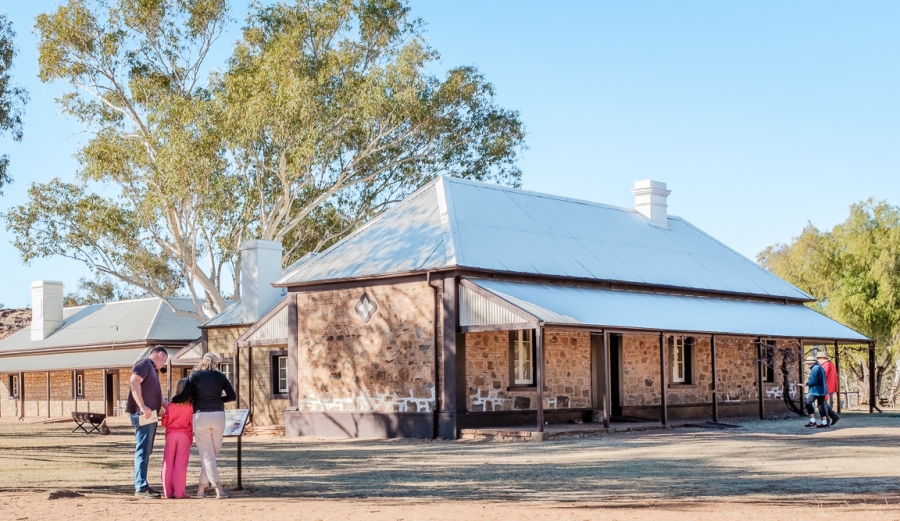
Telegraph Station is an historic building from early colonial times just outside of Alice Springs. It was one of 12 stations along the Overland Telegraph Line, and was closed in 1932. It was then turned into an institutional home — The Bungalow (pictured) — where Stolen Generation children were housed, far away from their family members. Today it is a tourist stop when visiting Alice Springs, but its bitter history has left painful memories for Aboriginal families.
‘It’s still happening today’
There is also a growing movement of Aboriginal grandmothers who are speaking out against the removal of children from their communities.
In Alice Springs, one chapter of Grandmothers Against Removals meets regularly in a large park called Telegraph Station. It’s a bittersweet place for them to be, according to Felicity Hays, a grandmother who belongs to the Aranda people of Central Australia and lives near the city.
“Little children were taken away from their parents, little half-caste kids, little kids that got white blood in them,” she said referring to the Stolen Generations. “This is where they used to keep them.”
Hays points to a large building in the park. It used to be a school and group home for Aboriginal children removed from their parents.
“So some people are sort of sad you know, when they come here, because of memories of children being taken to other places where they have no families.”
The trauma caused to Indigenous families of the Stolen Generation is still present, even decades after those policies ended. Yet Hays believes the forced removal of children continues. Ten years ago two of her grandchildren were removed to foster care outside the community. It took the family years to locate them and get them back, she said.
Another grandmother, Isabel Turner, who is also of the Aranda Aboriginal people, said she has had multiple children removed from her extended family.
“I’ve had a lot of [children] removed from my family without communication, without family conferencing,” Turner said. “It’s still happening today.”
The law requires social service workers to try to place Aboriginal children inside the family network, or at least with an Aboriginal family. Under a set of Aboriginal child placement principles, every attempt should be made by social service workers to first place an Aboriginal child within a kinship network. What Turner and other women told The World is they were never asked if they could take in their own grandchild, or nephew, or niece, during the process of removing the child from their parents.
According to these grandmothers, the law is being broken each time a child is removed and no family is contacted.
“We don’t see evidence of that,” said children’s commissioner Gwynne. She said social service workers in the Northern Territory are following the correct removal protocols.
“We see times when it could be done better,” Gwynne said.
Yet Isabel Turner is adamant.
“They have to notify families when these kids are taken away, but it’s not happening,” she said.
Turner offered a solution her group has been pushing for: “If they don’t know how to do their job, these Children and Family Services [workers], they should get people like us grandmothers to do their job, you know, or work together.”
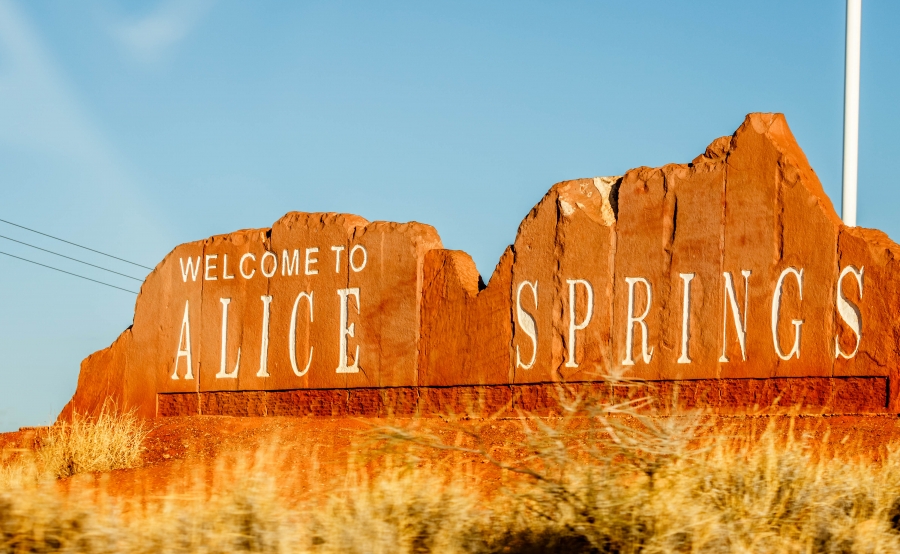
Alice Springs is the central city in what is known as Australia's "Red Center," denoted for it's red rock and red earth.
Having a grandmother along during a removal might help a social service worker not penalize an Aboriginal mother for being poor, Turner added.
Aboriginal poverty is the big elephant in this discussion, according to Ireland.
“We’re talking about Aboriginal communities having greater voice in how our child protection system would operate and really shifting this white middle class ideology that’s built into most child protection systems into one that should be more about diversity and listening to the people that are greatly being impacted here,” Ireland said.
So when a child protection worker sees evidence of poverty — a shabbily dressed grandmother or an unkempt home — they may not have the cultural understanding to determine that despite this, the child being removed from their parents can have a decent life with this family member despite their poverty, according to Ireland.
Aboriginal grandmothers argue that they want their children to stay within a family network so they can learn their native languages and culture. Felicity Hays is teaching her 6-year-old grandaughter two of her languages: Western Aranda and Pitjantjatjara. She wishes she could have done this for her two other grandchildren who were removed 10 years ago.
But the child protection system is not set up to value the deep culture that extended family members bring, Ireland said.
“The argument that culture should always be second is the first thing we hear from governments across the country,” Ireland said. “Culture to us is not second, it’s hand-in-hand with every other need that every person has a right to.”
This doesn’t mean a child should not be removed if the home is unsafe, Ireland said.
“Children have a right to be safe and that’s our priority, but at the same time, they have a right to their culture and [to be] connected to their culture. It’s not one or the other — it’s one and the same.”
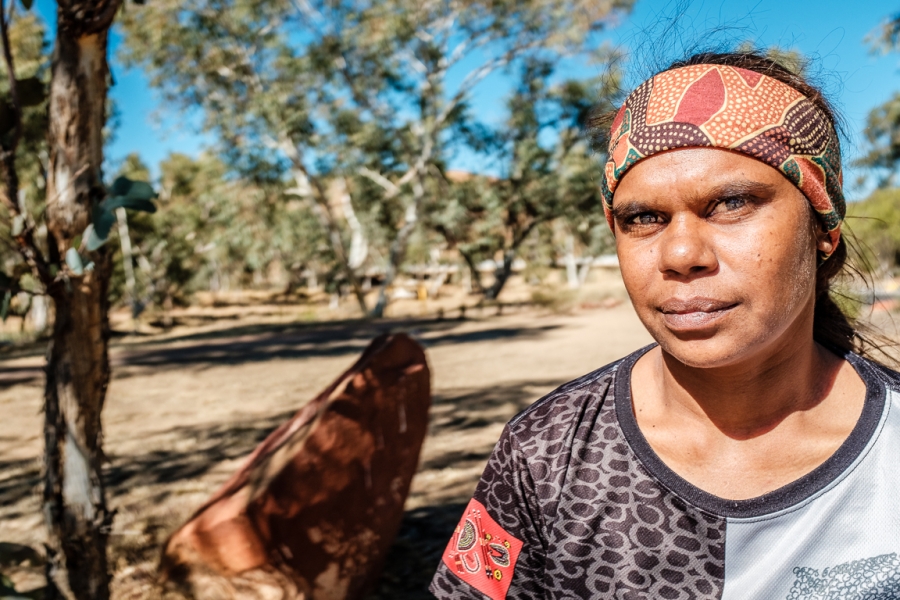
Shirleen Campbell is an organizer with The Tangentyere Women's Family Safety Group — a family violence prevention group in Alice Springs. She experienced domestic violence and together with other women in her family helped her husband turn around his behavior. Tangentyere and Campbell work to support women and families so they can end the violence and keep their families together.
‘I watched domestic violence all the time’
Aboriginal women from Alice Springs have solutions of their own. One group of women is demanding resources to deal with domestic and family violence that is the precursor to officials removing children. Shirleen Campbell, an Aboriginal mother of five, is one of the key activists in the movement to empower Indigenous women to take the lead in implementing solutions.
Campbell has lived with family violence since she was a child.
“I watched domestic violence all the time,” Campbell said. “If it’s not my mum and dad, it would be our family members.”
She herself was a victim of abuse from her husband. She lost two aunts to domestic violence in recent years.
“[Domestic violence] can break up families and it’s not a good thing,” she said. “It’s pretty daunting for the kids as well.”
She didn’t want to be the next statistic, nor endanger the lives of her kids. She enlisted the women in her family to help her husband understand how damaging his behavior was. Campbell and her family created a safety plan for her and her children, identified safe houses and then worked with her husband so he could see how his behavior affected his children.
“My husband actually turned things around knowing that I needed his support,” she said.
Campbell is an community organizer with the Tangentyere Women's Family Safety Group, that is pushing local and federal government to fund family support services and support Aboriginal mothers so they can end the cycle of violence. She says her husband has seen the light. Now he is educating other men.
“He goes out to the communities talking about domestic violence … men don’t hit their partners, they’re not real men,” Campbell said. “Real men stand up and support their wives. Real men always be equal with their partner.”
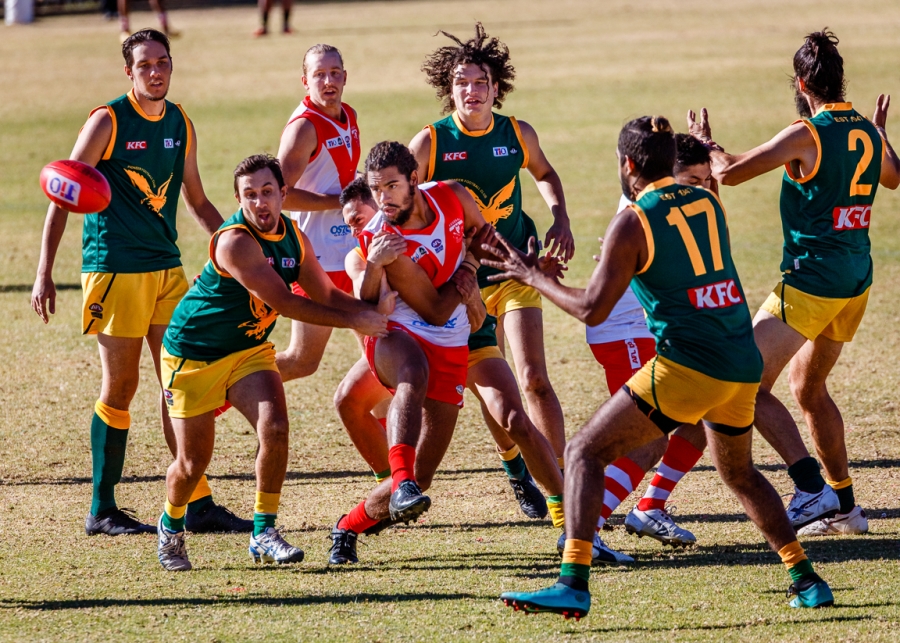
A game of Australian Rules Football takes place in Alice Springs, in Australia's Northern Territory. Shirleen Campbell's family is still together and her sons are top Australian Rules Football players in the local league.
In the local Aboriginal communities, organizers with Tangentyere visit homes where they know domestic violence is a problem just to have a presence and support the mothers; they conduct trainings twice a week for men; they educate women on developing a safety plan and how to keep their children safe if violence does erupt.
The women of Tangentyere have also traveled to Australia’s capital city, Canberra, to meet with lawmakers and stage protests. They need more resources to get to more homes and to provide more options for families in need, Campbell said.
Campbell is all too aware that her children would have been taken from her if her community had not helped her turn around the violence in her own home. Ending domestic violence means more Aboriginal families will stay together, she said.
“We’re just sick of the violence,” Campbell said. “We stand by our culture but we don’t accept violence because it’s not good.”






